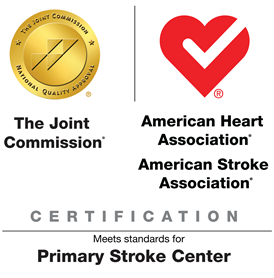Women and Stroke
Stroke is the Third Leading Cause of Death for Women
 Approximately 55,000 more women than men have a stroke each year, and it kills twice as many women as breast cancer each year. That’s why it is so important to be familiar with the symptoms and risks associated with women and stroke.
Approximately 55,000 more women than men have a stroke each year, and it kills twice as many women as breast cancer each year. That’s why it is so important to be familiar with the symptoms and risks associated with women and stroke.
When it comes to a stroke, every minute counts. If you, or someone you are with, experience the symptoms of stroke, seek medical attention immediately. The sooner treatment begins, the better chance for recovery.
Women and men experience many of the same symptoms of stroke:
- Sudden numbness or weakness of the face, arm or leg
- Confusion
- Difficulty speaking
- Problems with vision
- Loss of balance or coordination
- Trouble walking
- Sudden onset of a severe headache for no known cause
However, some signs of stroke are unique to women, such as:
- Rapid onset of hiccups
- Nausea
- Fatigue
- Chest pain
- Face and limb pain
- Shortness of breath or heart palpitations
Experiencing Stroke Symptoms
The signs of stroke require immediate attention. Never wait more than five minutes to dial 9-1-1 if you experience even one of the symptoms. You could be experiencing a stroke even if you don’t exhibit all of the symptoms. It’s also important that you check the time, as the responding medical providers will need to know when your first symptoms occurred.
Strokes caused by blood clots, which are called ischemic strokes and are the most common type, can be treated with clot-busting drugs such as tPA, or tissue plasminogen activator. But in order to be effective, the medication must be administered within three hours of the initial onset of symptoms.
Anticoagulants, such as warfarin and antiplatelet drugs, such as aspirin, may be prescribed to help prevent a stroke in people who are high risk. In other cases, surgery may be recommended to treat or prevent stroke. Carotid endarterectomy can be performed to remove fatty deposits that clog the carotid artery in the neck. If a person does have a stroke, rehabilitation can help rebuild strength, capability and confidence to continue daily activities.
Risk Factors
Women and men share many of the same risk factors for stroke. While a person of any age can have a stroke, risk increases with age. In fact, the chances of having a stroke double every 10 years after the age of 55. Other risk factors include a family history of stroke, high blood pressure or cholesterol, smoking, diabetes, being overweight and not exercising.
Women also have some exclusive risk factors that could raise their risk of having a stroke, which include:
- Taking birth control pills
- Experiencing natural changes in the body during pregnancy that increase blood pressure and put stress on the heart
- Using hormone replacement therapy to relieve symptoms of menopause
- Being postmenopausal and having a waist that is larger than 35.2 inches and a triglyceride level higher than 128 milligrams per liter
- Suffering from migraines
In addition, African-American women have more strokes than Caucasian women, and stroke is the number one cause of death for Hispanic women.
Prevention
The good news is that there are steps women can take to actively reduce their risk of stroke.
- Monitoring blood pressure
- Not smoking
- Knowing their cholesterol and triglyceride levels and taking steps to improve those levels, if necessary
- Limiting alcohol
- Maintaining a healthy weight
Generally, it is safe for young, healthy women to take birth control pills. However, risk of stroke increases in some women who are over 35, smoke, have diabetes and/or high blood pressure/cholesterol.
For more information about stroke, talk with your doctor or call 773-564-7777 for a free referral to a neurologist near you.
Need Help?
Learn about stroke care at Weiss.
